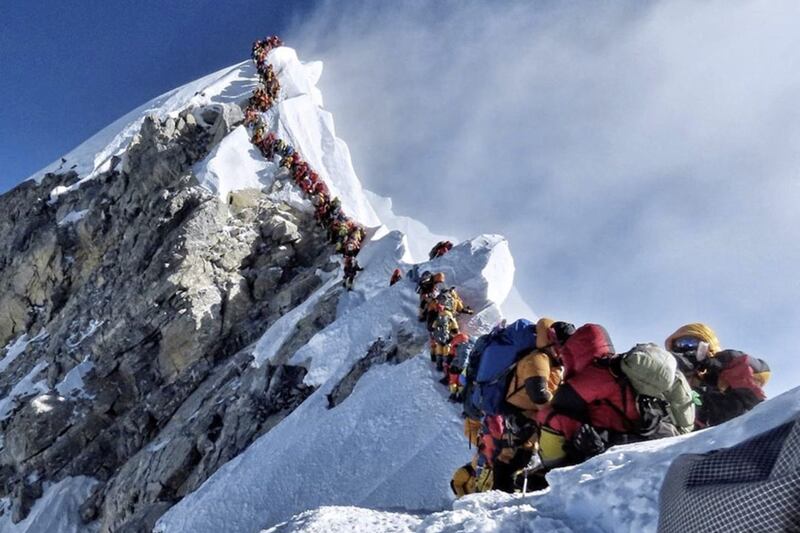Nepal's reluctance to limit the number of permits it issues to scale Mount Everest has contributed to dangerous overcrowding, with inexperienced climbers impeding others and causing deadly delays, seasoned mountaineers said.
During the short period this season when the weather was clear enough to attempt the summit, climbers were crammed crampon-to-crampon above South Col's sharp-edged ridge, all clipped on to a single line of rope, trudging towards the top of the world and risking death as each minute ticked by.
"There were more people on Everest than there should be," Kul Bahadur Gurung, general secretary of the Nepal Mountaineering Association, an umbrella group of all expedition operators in Nepal said.
Eleven people have died this season, including two Irishmen, the highest number since 2015.
Kevin Hynes (56), a father-of-two, who died during his descent down the mountain last week. University professor Séamus Lawless died the previous week.
A British climber, Robin Haynes Fisher (44), died on Saturday as he descended from the summit.
Most are believed to have suffered from altitude sickness, which is caused by low amounts of oxygen at high elevation and can cause headaches, vomiting, shortness of breath and mental confusion.
Once only accessible to well-heeled elite mountaineers, Nepal's booming climbing market has driven down the cost of an expedition, opening Everest up to hobbyists and adventure-seekers.
They are required to have a doctors' note deeming them physically fit, but not to prove their stamina at such extreme heights.
Because of the altitude, climbers have just hours to reach the top before they are at risk of a pulmonary oedema, when the lungs fill with liquid.
From Camp Four at 8,000 metres (26,240ft) to the 8,850-metre (29,035ft) peak, the final push on Everest is known as the "death zone".
The conditions are so intense at such times that when a person dies, no-one can afford to expend energy on carrying the body down from the mountain.
Nepal does not have any regulations on the books to determine how many permits should be issued, so anyone with a doctor's note can obtain one for an $11,000 dollar (£8,680) fee.
This year, permits were issued to 381 people, the highest number ever, according to the government.



